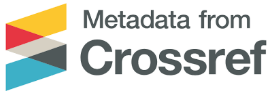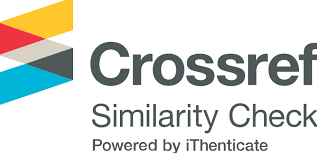EVALUATION OF GENETIC DIVERSITY IN ACACIA MANGIUM CLONAL SEED ORCHARDS BY USING MICROSATELLITE MARKERS
Keywords:
Acacia mangium,, Genetic diversity,, Microsatellite markers,, Clonal seed orchardAbstract
Simple-sequence-repeat (SSR) markers were used to assess the genetic diversity of 100 clones of A.
mangium growing in clonal seed orchards (CSO) at Ba Vi and Cau Hai.
The mean expected and observed heterozygosities were 0.437 and 0.495 respectively. The average
number of alleles observed with each marker was 3.078 against while the expected number of
2.731. As heterozygosity was greater than expected, there was limited evidence of inbreeding in
these orchards.
The actual rate of inbreeding was about 14% and using that genetic information it was possible to
assign the eight provenances present in the CSOs, into 4 groups: one containing five provenances
(Wipin, Cardwell SO, Claudie River, Derideri, Kini) and three containing only one provenance
each. We believe these orchards, which contain 100 clones of A. mangium, have sufficient genetic
diversity and potential for outcrossing to be suitable for seed production.
References
/1. Lê Sơn, 2009. “Sự khác biệt về di truyền giữa các loài bạch đàn E. pellita, E. resinifera và E.
scias” Luận văn thạc sĩ. Trường Đại học Southern Cross- Úc.
/2. Allendorf F W and Luikart G, 2007. Conservation and the Genetics of Populations. Blackwell
publishing.
/3. Butcher PA, Moran GF, Perkins HD, 1998. RFLP diversity in the nuclear genome of Acacia
mangium. Heredity 81 (1998), 205-213.
/4. Butcher P A, Decroocq S, Gray Y, Moran GF, 2000. Development, inheritance and cross-species
amplification of microsatellite markers from Acacia mangium. Theoretical and Applied Genetics,
Vol 101: 1282-1290.
/5. Butcher P, Harwood CE, Quang TH, 2004. Studies of mating system in seed stands suggest
possible cause of variable outcrossing rates in natural populationsof Acacia mangium. Forest
Genetics, Vol. 11, p. 303-309.
/6. Byrne M, Marquez- Garcia MI, Uren T, Smith DS and Moran GF, 1996. Conservation and
Genetic diversity of Microsatellite loci in the genus Eucalyptus. Aust J Bot. vol 44: 331-341.
/7. Chin Hong Ng, Koh SC, Lee L, Ng K KS, Mark A, Norwati M, Wickneswari R , 2005. Isolation
of 15 polymorphic microsatellite loci in Acacia hybrid (Acacia mangium x Acacia auriculiformis).
Molecular Ecology Notes, Vol 5 (3): 572-575.
/8. Drummond AJ, Ashton B, Cheung M, Heled J, Kearse M, Moir R, Stones-Havas S, Theirer T,
Wilson A, 2008. Geneious Pro v4.0.4 available at http://www.geneious.com/. (Veryfied 27-11-2008).
/9. Fofana I J, Ofori D, Poitel M, Verhaegen D, 2009. Diversity and genetic structure of teak
(Techtona grandis L.f) in its natural range using DNA microsatellite markers. New Forest (2009)
: 175-195.
/10. Payn KG, Dvorak WS, Janse JHB, Myburg AA, 2008. Microsatellite diversity and genetic
structure of the commercially important tropical tree species Eucalyptus urophylla, endemic to
seven islands in eastern Indonesia. Tree genetics and Genomic (2008) 4: 519-530.
/11. Peakall R, Smouse PE, 2006. GenAlEX 6: genetic analysisin Excel. Population genetic software
for teaching and research. Molecular Ecology Note, Vol. 6, 288-295.
/12.Tamura K, Peterson D, Peterson N, Stecher G, Nei M, and Kumar S (2011) MEGA5: Molecular
Evolutionary Genetics Analysis using Maximum Likelihood, Evolutionary Distance, and Maximum
Parsimony Methods. Molecular Biology and Evolution (submitted).
/13. White TL, Adams WT and Neale DB, 2007. Forest genetics. CABI publishing.
/14. Young A, Boshier D và Boyle T, 2000. Forest Conservation Genetics principles and practice.
CSIRO publishing.








